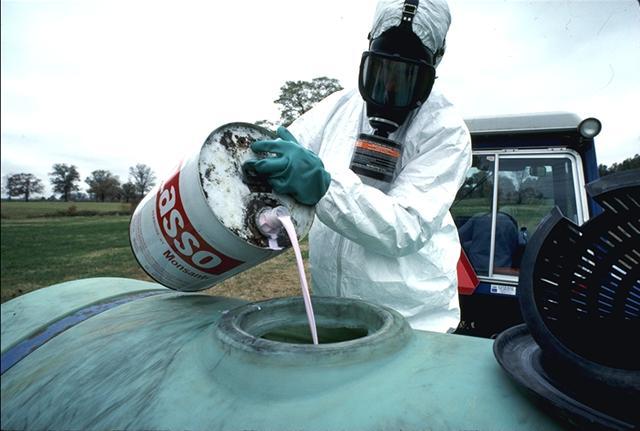Organochlorines are chemicals that contain carbon and chlorine. Many organochlorines are harmful because they do not break down easily. This means they stay in the environment and our bodies for a long time. They can be concentrated in the food chain so the animals at the top of the food chain, such as humans, will have the highest levels. There are 12 organochlorines listed as POPs (persistent organic pollutants).
Organochlorines are vapour forming and can be carried by the air for long distances. Eventually, they condense and are deposited on land or are dissolved in water.
Organochlorines that have been used in New Zealand include dioxin, polychlorinated biphenyls (PCBs), pentachlorophenol (PCP), dieldrin and DDT. PCBs and PCP are toxic in their own right but both also contain dioxin.
Organochlorines have been used as insecticides such as dieldrin in sheep dipping, PCP has been used in treating timber, and DDT sprays have been used on farms and in homes. The use of organochlorine pesticides was restricted by a series of laws so that, by the mid 1970s, they were not being used in agriculture and horticulture.
PCBs were banned in New Zealand in 2004. Some PCBs can still be found in manufactured items such as old electrical transformers and capacitors. The New Zealand Environmental Protection Authority (EPA) has a framework to manage the storage and disposal of these.
Organochlorines have been shown to cause abnormalities in development and reproduction in fish-eating birds, which are high in the food chain. Other health risks to humans include cancer and reduced immune systems.
Some POPs and PCB chemicals are incorporated into plastics as raw materials or additives during manufacture and can leach from plastics into the environment.
When plastics break down into microplastics, they can also be ingested by animals – some chemicals directly associated with plastics have been detected in humans and wildlife including birds and various marine species. Learn more in How harmful are microplastics?
Dioxin
Dioxin is an organochlorine but is not manufactured as are PCBs, PCP, dieldrin and DDT. It is produced when organic material is burnt in the presence of chlorine. Burning wastes, chlorine bleaching of pulp and paper, and some industrial processes can all create small quantities of dioxins. They may also be formed from natural sources such as forest fires.
Most dioxins escape into the environment from air emissions. Dioxins may stay in the air for a long time and be carried a great distance before settling on soil or water. If dioxins settle on pastoral land, they may be taken up by grazing animals and stored in the animals’ meat and milk. Dioxins can also enter our rivers, lakes and estuaries in effluent discharges, where they may be taken up by fish and shellfish. Over 90% of our exposure to dioxins comes from eating meat, dairy products and fish. Infants can also be exposed to dioxin that has accumulated in their mother’s breast milk.
The levels of dioxin in New Zealand are low compared with other countries but even low levels can result in accumulation in our bodies. The major sources of dioxin in New Zealand come from burning of waste from industry and in backyards. New Zealand is trying to reduce the level of dioxins it produces by stopping the use of organochlorine pesticides, no longer using elemental chlorine in our pulp and paper mills, and improving or removing inefficient waste incinerators.
Related content
Chemicals from farming and industrial practices, both past and present, and geological processes can contribute to the level of toxins in our soil. These toxic chemicals can leach into our waterways and have a detrimental effect on our fragile aquatic ecosystem. The articles Soil quality, Soil contamination and Poisons and toxins provide more details.
Take a closer look at some other chemicals that pose a risk to New Zealand environments in Zinc in the environment, Tetracycline antibiotics in the environment and Neonicotinoids insecticides.
Activity idea
Further examine soil quality issues with the activity Site clean-up.
Useful link
See the Ministry for the Environment's summary of some organochlorine research reports.
See the New Zealand Environmental Protection Authority website Hazardous substances section.


